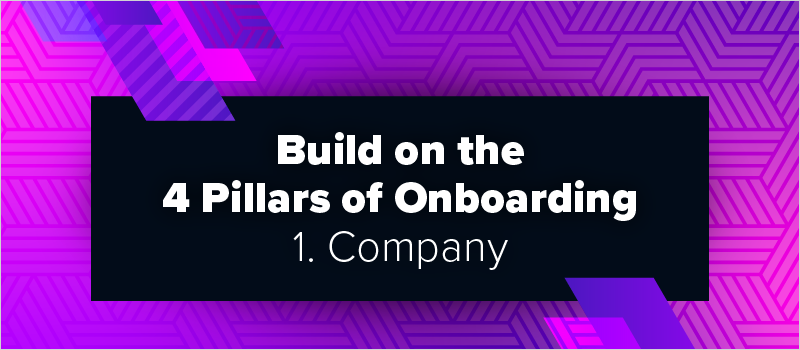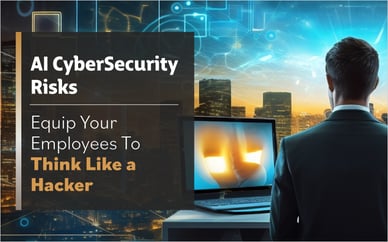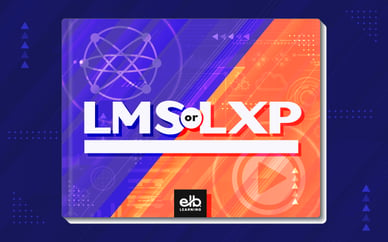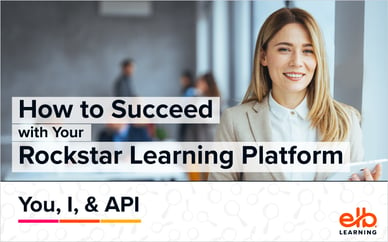
Imagine your first day at your current company.
What was it like? Did your manager take you out to lunch with the team?
Did you accidentally eat someone’s organic pretzels in the break room because you thought they were for everyone? Did you get lost on your way to the bathroom? Were you confused about who was who or how to log into the company intranet?
Those experiences—and answers to those questions—are all part of the onboarding process. However, when you can’t onboard a new employee in person, whether they’re going to be working remotely permanently or just temporarily due to the pandemic, you might need to rethink your onboarding process.
The key to virtual onboarding success?
Having an organized, well-thought out plan ahead of time. The time you invest into strategically weaving onboarding activities among regular work duties as a new hire gets acclimated will pay off in creating engaged employees performing at their full potential as quickly as possible.
We recently released a free eBook, The Virtual Onboarding Handbook, which walks you through the 4 pillars of onboarding and key topic areas to cover in your virtual onboarding program. It also includes a sample template of a virtual onboarding program, loosely based around a 30-60-90 day structure.
In this new blog series, we’ll be highlighting the 4 pillars of onboarding:
- My Company
- My Career
- My Team
- My Self
To get all the details and examples, download the eBook.
Today, we’ll talk about how to cover what your new hire needs to know about their new company.
PILLAR 1: MY COMPANY
This pillar covers:
- Benefits & Compliance
- Systems & Tools
- Products & Positioning
Your virtual onboarding program should clearly define the mission and goals of your organization, and how your new hire will be expected to contribute and add value.
Understanding how your company works is essential for any worker to be successful.
Spelling out rules and expectations clearly from day one is especially important for remote workers, who don’t have the benefit of watching and following coworkers. (But at least there’s no risk of them eating anyone’s snacks!)
Schedule checkpoints to make sure they can access and use required communication and productivity tools. This will help speed productivity and head off potential frustration.
Benefits & Compliance
Complete essential paperwork as soon as possible, including:
- Benefits enrollment
- Company handbook review
- Any other human resources topics that apply
Any items that can’t be completed in advance of hire are typically scheduled for day one, or within the first week.
Some items you may even be able to complete via email ahead of time, in between the offer acceptance and your new hire’s start date. If something can’t be signed digitally, be sure to mail it in advance.
Getting the paperwork out of the way gives your new hires time to focus on making interpersonal connections.
With virtual onboarding in particular, it’s important to emphasize the human element from the very beginning.
Spread out your compliance training throughout the first month of onboarding. Compliance training is important, but trying to pack it all in the first week will slow down productivity.
Depending on your location, you may be required to provide anti-discrimination and harassment training to every new employee. Additional compliance training topics to consider are cybersecurity training—especially important with remote employees—and unconscious bias or diversity and inclusion training.
A 2017 Career Builder survey reports that 36% of employers lack a structured onboarding process, leading to lower productivity, higher employee turnover, lower morale and lower employee engagement.
Systems & Tools
Technology can connect co-workers around the world, but learning new systems and tools can be overwhelming, especially for a first-time remote worker. Think of how many times someone has forgotten to mute themselves on a video call since the pandemic started!
To get your new hire working productively, you’ll need to ensure they’re set up with accounts for all your interoffice communication tools (email, video conferencing, instant messaging, etc.) and that they know how to use them.
The easiest way to do this virtually is through screen recording videos with step-by-step demonstrations of each tool.
Then go into more detailed processes like file management, time tracking, and any company-specific systems like product lifecycle software, customer relationship management systems, and your learning management platform. Begin this training day one and continue throughout the first weeks of onboarding.
Products & Positioning
What product or service does your organization offer? Who do they serve? Whether it’s education or patio furniture or software, everyone in your organization should know how to talk about and use your products or service, as well as see the value of your mission and goals.
All new hires should be trained on:
- Product features, benefits, pricing, and at least an overview of technical data
- Customer segments
- Competitor information
- Frequently asked questions or concerns customers have about the product and how to respond
- Who the go-to person for each product or service is
Your Learning Management System (LMS) or Learning Experience Platform (LXP) should make it easy to deliver product training virtually. Along with formal training and product sheets, don’t overlook recorded demos, webinars, or presentations.
In addition to product info, share rules for interacting with the public, and how to talk about the company itself. This part of onboarding could include formal media training or just a quick overview of company social media accounts to re-share.
This is just one pillar of a successful virtual onboarding program.
We’ll cover the next three in upcoming blogs. In the meantime, download the eBook to get all the examples and access to a sample virtual onboarding program inside our LMS.








